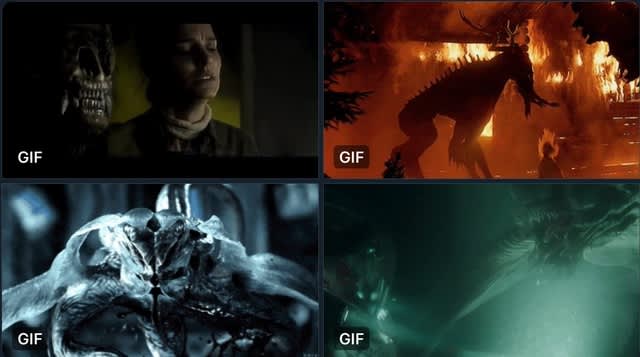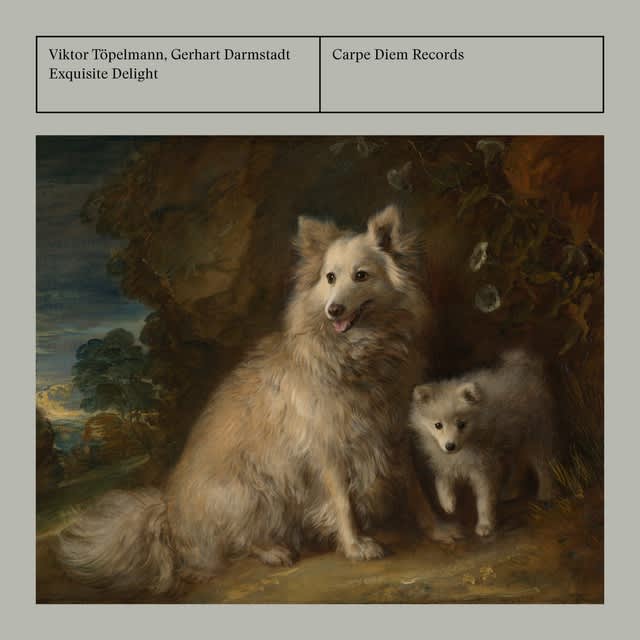

□ DNA-Diffusion: Leveraging Generative Models for Controlling Chromatin Accessibility and Gene Expression via Synthetic Regulatory Elements
>> https://www.biorxiv.org/content/10.1101/2024.02.01.578352v1
DNA-Diffusion is a conditional diffusion model that operates in the space of DNA sequences. Sequences are encoded using a strategy akin to one-hot encoding, but each nucleotide has a support range of [-1, 1] to facilitate the injection of Gaussian noise centered around zero.
DNA-Diffusion utilizes a U-Net architecture to generate new DNA sequences. DNA-Diffusion receives three inputs: DNA sequences, a timestep, and cell type labels. After training, the model takes in input a cell type label and can generate novel cell type-specific sequences.

□ LEMUR: Analysis of multi-condition single-cell data with latent embedding multivariate regression
>> https://www.biorxiv.org/content/10.1101/2023.03.06.531268v2
LEMUR (Latent Embedding Multivariate Regression) enables differential expression analysis using a continuous low- dimensional latent space representation of cell type and state diversity, and thus operates without (or before) commitment to discrete categorization.
LEMUR aligns the data from the different conditions, predicts how a cell’s gene expression changes as a function of the conditions and its position in latent space, and identifies compact neighborhoods of cells with consistent differential expression for each gene.

□ ntSynt: Multi-genome synteny detection using minimizer graph mappings
>> https://www.biorxiv.org/content/10.1101/2024.02.07.579356v1
ntSynt, a scalable utility for computing large-scale multi-genome synteny blocks. ntSynt uses lightweight, Bloom filter-guided minimizer sketches to create an undirected minimizer graph, which is then leveraged for synteny block computation.
ntSynt produces contiguous synteny blocks for genomes of increasing divergences. Minimizer sketches are computed from each assembly using btllib with a Bloom filter comprised of the k-mers common to all assemblies. Collinear blocks are merged to output the final synteny blocks.

□ StaVia: Spatially and temporally aware cartography with higher order random walks for cell atlases
>> https://www.biorxiv.org/content/10.1101/2024.01.29.577871v1
StaVia, an automated end-to-end trajectory inference (TI) framework that uncovers cellular trajectories permeating large-scale single-cell spatial and temporal atlases without sacrificing the fine-grained details.
StaVia exploits a new form of lazy-teleporting random walks (LTRW) w/ memory to accurately pinpoint end-to-end trajectories in the atlas. Specifically, higher-order LTRW with memory are used to propagate information about a cell's previous states when inferring subsequent states.
StaVia feeds forward the properties of the higher-order walks with memory and metadata to create a comprehensive cartographic Atlas View, which efficiently integrates the high-resolution graph-edge information with the cell type specificity of single-cell embeddings.
StaVia allows flexible integration of data and metadata (e.g. time-series developmental labels from temporal atlases, spatial layout, gene/feature similarity and single-cell RNA-velocity) to compute pseudotimes, cell fates and lineage pathways.

□ Cerebra: a computationally efficient framework for accurate protein structure prediction
>> https://www.biorxiv.org/content/10.1101/2024.02.02.578551v1
Cerebra (co-evolution of residue embedding and between-residue attention) predicts multiple sets of atomic coordinates all at once so as to reach a similar effect as parallelized training, speeding up model convergence. Cerebra attains an acceleration of about 7x over OpenFold.
Cerebra allows accurate prediction of various local portions of the target protein within the simultaneously generated multiple sets of atomic coordinates and the mutual complementarity between these local structural motifs is then leveraged by Path Synthesis Attention.

□ AttentionPert: Accurately Modeling Multiplexed Genetic Perturbations with Multi-scale Effects
>> https://www.biorxiv.org/content/10.1101/2024.02.02.578656v1
AttentionPert can predict transcriptional responses to multiplexed genetic perturbations, which integrates the multi-head attention mechanism with graph neural networks on augmented gene interactions, alongside pre-trained co-expressive gene representations.
AttentionPert utilizes a pre-trained context gene representation to initialize all the gene embeddings rather than random initialization. All embeddings for gene indexes are initialized using pre-trained Gene2Vec embeddings.
AttensionPert consists of two novel encoders: PertWeit and PertLocal. PertLocal learns the non-additive coeffects of multi-gene perturbations. PertWeight perturbs all the gene-representing vectors in high-dimensional latent space with non-uniformly weighted offsets.

□ NanoCon: Contrastive learning-based deep hybrid network for nanopore methylation detection
>> https://academic.oup.com/bioinformatics/advance-article/doi/10.1093/bioinformatics/btae046/7596622
NanoCon, a deep hybrid network coupled with contrastive learning strategy to detect 5mc methylation sites from Nanopore reads. NanoCon adopts a contrastive learning module to alleviate the issues caused by imbalanced data distribution in nanopore sequencing.
NanoCon incorporates the Transformer model with the 5-mer representation strategy to encode the sequence information and a fully connected neural network to encode the electrical signal data, and integrated them using the Bi-GRU (Bidirectional Gated Recurrent Unit) model.

□ AGImpute: Imputation of scRNA-seq data based on a hybrid GAN with dropouts identification
>> https://academic.oup.com/bioinformatics/advance-article/doi/10.1093/bioinformatics/btae068/7601322
AGImpute uses a dynamic threshold estimation strategy to adaptively identify the number of dropout events in different cells. Then, an Autoencoder-GAN model is used to impute the identified dropout events, by leveraging information from both similar cells and GE distributions.
In the GAN layer, the gene expression vector of each cell is transformed into a 100 × 100 matrix as input. Then, the generator generates synthetic data similar to the true data and the discriminator distinguishes between generated and true data.

□ CTISL: a dynamic stacking multi-class classification approach for identifying cell types from single-cell RNA-seq data
>> https://academic.oup.com/bioinformatics/advance-article/doi/10.1093/bioinformatics/btae063/7601321
CTISL (Cell Type Identification by Stacking ensemble Learning), which integrates multiple classifiers to identify cell types. In CTISL, cell type identification is regarded as a multi-class classification task.
CTISL dynamically combines multiple cell type-specific classifiers (i.e., support vector machine [SVM] and logistic regression [LR]) as the base learners to deliver the outcomes for the input of a meta-classifier in the second layer.

□ Floria: Fast and accurate strain haplotyping in metagenomes
>> https://www.biorxiv.org/content/10.1101/2024.01.28.577669v1
Floria, a novel method designed for rapid and accurate recovery of strain haplotypes from short and long-read metagenome sequencing data, based on minimum error correction (MEC) read clustering and a strain-preserving network flow model.
Floria optimizes a MEC model of SNP phasing locally and then finds a coverage-preserving network flow by linear programming (LP) on a directed acyclic graph (DAG) constructed from the locally phased blocks.
Floria can function as a standalone haplotyping method, outputting alleles and reads that co-occur on the same strain, as well as an end-to-end read-to-assembly pipeline (Floria-PL) for strain-level assembly. Haplosets can be assembled to give haplotigs.

□ BERTE:High-precision hierarchical classification of transposable elements by a transfer learning method with BERT pre-trained model and convolutional neural network
>> https://www.biorxiv.org/content/10.1101/2024.01.28.577612v1
BERTE, a transfer learning-based classification method that uses a BERT pre-trained model and cumulative k-mer frequency vectors for feature extraction, and then uses a CNN classifier for TE hierarchical classification. BERTE transformed sequences into attentional features.
BERTE obtains the cumulative k-mer frequency vector for each full-length sequence. This vector is a concatenation of the frequency vectors for 4-mer, 5-mer, and 6-mer. They were fed into the CNN classifier for prediction of different categories, enabling hierarchical TE classification.

□ Deep centroid: a general deep Cascade classifier for biomedical omics data classification
>> https://academic.oup.com/bioinformatics/advance-article/doi/10.1093/bioinformatics/btae039/7596621
Deep Centroid, a novel classifier that combines the stability of the centroid classifier with the robust fitting ability of the deep cascade strategy.
Deep Centroid employs an ensemble learning approach with a multi-layer cascade structure, comprising feature scanning and cascade learning stages that allow for dynamic adjustment of the training scale.
Deep Centroid employs a random scanning strategy to extract biologically meaningful feature sets. Applying Deep Centroid to three precision medicine applications — cancer early diagnosis, cancer prognosis, and drug sensitivity prediction - using cell-free DNA fragmentations.

□ QOT: Efficient Computation of Sample Level Distance Matrix from Single-Cell Omics Data through Quantized Optimal Transport
>> https://www.biorxiv.org/content/10.1101/2024.02.06.578032v1
QOT (Quantized Optimal Transport) transforms cell-by-gene expression matrices into parametric Gaussian Mixture Models (GMMs), facilitating efficient Wasserstein distance computations between samples.
QOT computes the Wasserstein distances based on the centroids of the Gaussian mixtures, integrating metrics such as angular differences, spatial distances, and the alignment of covariances.

□ GenerRNA: A generative pre-trained language model for de novo RNA design
>> https://www.biorxiv.org/content/10.1101/2024.02.01.578496v1
GenerRNA, a generative RNA language model built upon the Transformer decoder architecture.. This process entails predicting subsequent words or characters in a text sequence without any reliance on labels or annotations.
GenerRNA was pre-trained on approximately 30 million RNA sequences encompassing 17.4 billion nucleotides to acquire a broad, cross-family understanding of RNA representations, facilitating de novo sequence generation.
GenerRNA is composed of 24 Transformer decoder layers. The model operates in an autoregressive manner to predict the subsequent token. Both the input and output of the model are in the form of tokens, which are encoded and decoded by a trained tokenizer.

□ GraphCompass: Spatial metrics for differential analyses of cell organization across conditions
>> https://www.biorxiv.org/content/10.1101/2024.02.02.578605v1
GraphCompass enables differential analysis of spatial organization across conditions at three levels of abstraction: cell-type-specific subgraphs, multi-cell niches, and entire graphs. GraphCompass performs differential niche analysis by studying enriched pairs of neighbor cells.
GraphCompass employs Wasserstein Weisfeiler-Lehman kernel and filtration curves. GraphCompass calculates graph distances using portrait and diffusion methods. Both methods provide similarity scores between two networks of cells that represent two different conditions.

□ Forseti: A mechanistic and predictive model of the splicing status of scRNA-seq reads
>> https://www.biorxiv.org/content/10.1101/2024.02.01.577813v1
Forseti, a predictive model to probabilistically assign a splicing status to scRNA-seq reads. First, they train a binding affinity model to assign a probability that a given transcriptomic site is used in fragment generation.
Second, they fit a robust fragment length distribution model that generalizes well across datasets deriving from different species and tissue types.
Forseti combines these two trained models to predict the splicing status of the molecule of origin of reads by scoring putative fragments that associate each alignment of sequenced reads with proximate potential priming sites.

□ CCAN: A Cell Cycle-aware Network for Data Integration and Label Transferring of Single-cell RNA-seq and ATAC-seq
>> https://www.biorxiv.org/content/10.1101/2024.01.31.578213v1
CCAN is based on a domain separation network, adding a periodic activation function to the private decoder to simulate the dynamic process of the cell cycle, and projecting single-cell data from different modalities into a common low-dimensional space through shared projection.
The distribution constraint function and the class alignment loss function are added to the shared embedding space to make the distribution of different data as similar as possible and the difference between different types of data to be maximized.

□ ENT3C: an entropy-based similarity measure for contact matrices
>> https://www.biorxiv.org/content/10.1101/2024.01.30.577923v1
ENT3C is a method for qunatifying the similarity of 3C-Seq derived chromosomal contact matrices by comparing the "complexity" of patterns contained in smaller submatrices along their diagonals.
ENT3C detects local changes in the signal near the diagonal of a contact matrix based on the von Neumann information entropy and recent work concerning entropy quantification of Pearson correlation matrices.

□ scCensus: Off-target scRNA-seq reads reveal meaningful biology
>> https://www.biorxiv.org/content/10.1101/2024.01.29.577807v1
scCensus, a comprehensive Nextflow workflow for systematically classifying the off-target scRNA-seq reads from different genomic feature groups. It divides scRNA-seq reads into three categories: sense intragenic, antisense intragenic, and intergenic reads.

□ Accurate quantification of single-cell and single-nucleus RNA-seq transcripts using distinguishing flanking k-mers
>> https://www.biorxiv.org/content/10.1101/2022.12.02.518832v3
Introducing distinguishing flanking k-mers (DFKs) to identify reads that are external to the sequences present in the transcriptome index.
DFKs are a minimal set of k-mers that can be used to distinguish whether a read that is mapped to a set of targets in the transcriptome index has its origin from within the transcriptome index or has an external origin.

□ ALBATROSS: Direct prediction of intrinsically disordered protein conformational properties from sequences
>> https://www.nature.com/articles/s41592-023-02159-5
ALBATROSS, a deep-learning model for predicting ensemble dimensions of IDRs, including the radius of gyration, end-to-end distance, polymer-scaling exponent and ensemble asphericity, directly from sequences at a proteome-wide scale.
ALBATROSS performs coarse-grained simulations of a set of training sequences that would enable a bidirectional recurrent neural network with long short-term memory cells (LSTM-BRNN) model to learn the mapping between IDR sequence and global conformational behavior.

□ GeLuster: Highly efficient clustering of long-read transcriptomic data
>> https://academic.oup.com/bioinformatics/advance-article/doi/10.1093/bioinformatics/btae059/7600422
GeLuster avoids doing the time-consuming all-vs-all similarity comparison, as well as avoids the greedy strategy that deeply based on some kind of scoring system between sequences.
GeLuster extracts the so-called pseudo reference from the raw sequencing reads, which expectantly correspond to the expressed genes for the sequencing data. Based on a global optimal alignment between the raw reads and the pseudo reference, GeLuster generate the pre-clusters.
GeLuster runs in an iterative way, and within each iteration, it extracts a pseudo reference from the reads that need to be clustered, then aligns the reads to the pseudo reference, based on the alignments the reads will be clustered naturally.

□ ClusTrast: a short read de novo transcript isoform assembler guided by clustered contigs
>> https://bmcbioinformatics.biomedcentral.com/articles/10.1186/s12859-024-05663-3
ClusTrast takes short read as input, assembles a primary assembly, clusters a set of guiding contigs, aligns the short reads to the guiding contigs, assembles each clustered set of short reads, and merges the primary and clusterwise assemblies into the final assembly.
ClusTrast is to provide a comprehensive set of transcript isoforms, using only sequence reads as input, and with the explicit intent to prioritize recall.

□ Puzzle Hi-C: an accurate scaffolding software
>> https://www.biorxiv.org/content/10.1101/2024.01.29.577879v1
Puzzle Hi-C, which is software that uses Hi-C reads to assign accurately contigs or scaffolds to chromosomes. Puzzle Hi-C uses the triangle region instead of the square region to count interactions in a Hi-C heatmap.
This strategy dramatically diminishes scaffolding interference caused by long-range interactions. Puzzle Hi-C introduces a dynamic, triangle window strategy during assembling. The triangle window is initially small and expands w/ interactions to produce more effective clustering.

□ SPRITE: improving spatial gene expression imputation with gene and cell networks
>> https://www.biorxiv.org/content/10.1101/2024.01.31.578269v1
SPRITE (Spatial Propagation and Reinforcement of Imputed Transcript Expression), a meta-algorithm that processes predictions obtained from existing methods by propagating information across gene correlation networks and spatial neighborhood graphs.
SPRITE predicted spatial gene expression was generally better correlated and had lower mean absolute error with respect to the measured ground truth expression. For Tangram, SPRITE produced large positive improvement under the error metric.

□ MarkerGeneBERT: A natural language processing system for the efficient extraction of cell markers
>> https://www.biorxiv.org/content/10.1101/2024.01.30.578115v1
MarkerGeneBERT, an NLP-based system designed to automatically extract information about species, tissues, cell types and cell marker genes by parsing the full texts of the literature from single-cell sequencing studies.
MarkerGeneBERT integrates three pretrained NER models based on diverse biomedical corpora. Additionally, they incorporated cell names curated from the Cell Ontology database for exact string matching.
Given the standardized gene names, the MarkerGeneBERT utilized only gene symbol IDs exclusively sourced from the GTF file in Cell Ranger for accurate gene entity recognition.

□ Pycallingcards: an integrated environment for visualizing, analyzing, and interpreting calling cards data
>> https://academic.oup.com/bioinformatics/advance-article/doi/10.1093/bioinformatics/btae070/7602560
Pycallingcards, a comprehensive Python module specifically designed for the analysis of single-cell and bulk CC data across multiple species.
Pycallingcards employs two peak callers, CCcaller and MACCs, enhancing the accuracy and speed of pinpointing TF binding sites. Pycallingcards offers a fully integrated environment for data visualization, motif finding, and comparative analysis with RNA-seq and ChIP-seq datasets.

□ MAC-ErrorReads: machine learning-assisted classifier for filtering erroneous NGS reads
>> https://bmcbioinformatics.biomedcentral.com/articles/10.1186/s12859-024-05681-1
MAC-ErrorReads transforms the erroneous NGS read filtration process into a robust binary classification task, employing five supervised machine learning algorithms.
MAC-ErrorReads learns a mapping function F that transforms the input features space X extracted from each sequencing read into a binary label classification Y of this read as (1) for erroneous read and (0) for correct one.

□ Accelerating Look-ahead in Bayesian Optimization: Multilevel Monte Carlo is All you Need
>> https://arxiv.org/abs/2402.02111
MLMCBO employs the MLMC framework to Bayesian Optimization for the first time. Multilevel Monte Carlo accelerates nested Monte Carlo approximations. MLMC works by constructing a telescoping sum of estimations from low accuracy to high accuracy.
They prove a canonical complexity of O(e-3), the same as standard MC without nested operations, where Ö is used to denote O up-to log terms.

□ Cell Decoder: Decoding cell identity with multi-scale explainable deep learning
>> https://www.biorxiv.org/content/10.1101/2024.02.05.578922v1
Cell Decoder constructs a hierarchical graph structure based on the interactions b/n genes, the mapping relationships b/n genes and pathways, and the hierarchical pathway information. Cell Decoder minimises the cross-entropy loss b/n predicted and ground-truth cell labels.
Cell Decoder designs intra-scale and inter-scale message passing layers. Cell Decoder utilises mean pooling to summarise the node representations of the BPs in the last graph layer into cell representations and adopts a multi-layer perceptron classifier. Through hierarchical Gradient-weighted Class Activation Mapping (Grad-CAM) analysis of the fitted model. It provides a multi-view biological characterisation that enhances our ability to decode cell identity.

□ AAclust: k-optimized clustering for selecting redundancy-reduced sets of amino acid scales
>> https://www.biorxiv.org/content/10.1101/2024.02.04.578800v1
AAclust is a clustering wrapper framework that require a pre-defined number of clusters k, such as k-means, thereby eliminating the need to specify k in advance. It automatically partitions scale sets into k clusters by maximizing the within-cluster Pearson correlation. AAclust works in conjunction with clustering models that use a pre-defined k, such as k-means and hierarchical agglomerative clustering, but not with models optimizing k internally.


□ Optimizing genomics pipeline execution with integer linear programming
>> https://www.biorxiv.org/content/10.1101/2024.02.06.579197v1
This method is designed to work with all scientific pipelines that have a directed acyclic graph topology. A linear pipeline consists of a chain of tasks arranged so that the output of each element is the input of the next. In the case of a linear topology, the total time and cost to run a pipeline can be computed as a sum of all tasks time and cost.

□ Guiding Trojan light beams via Lagrange points
>> https://www.nature.com/articles/s41567-023-02270-6
Transversely confining light in fully dielectric, non-periodic and passive configurations remains a challenge in situations where total internal reflection is not supported. An approach to trapping light that utilizes the exotic features of Lagrange points—a special class of equilibrium positions akin to those responsible for capturing Trojan asteroids in celestial mechanics.



















